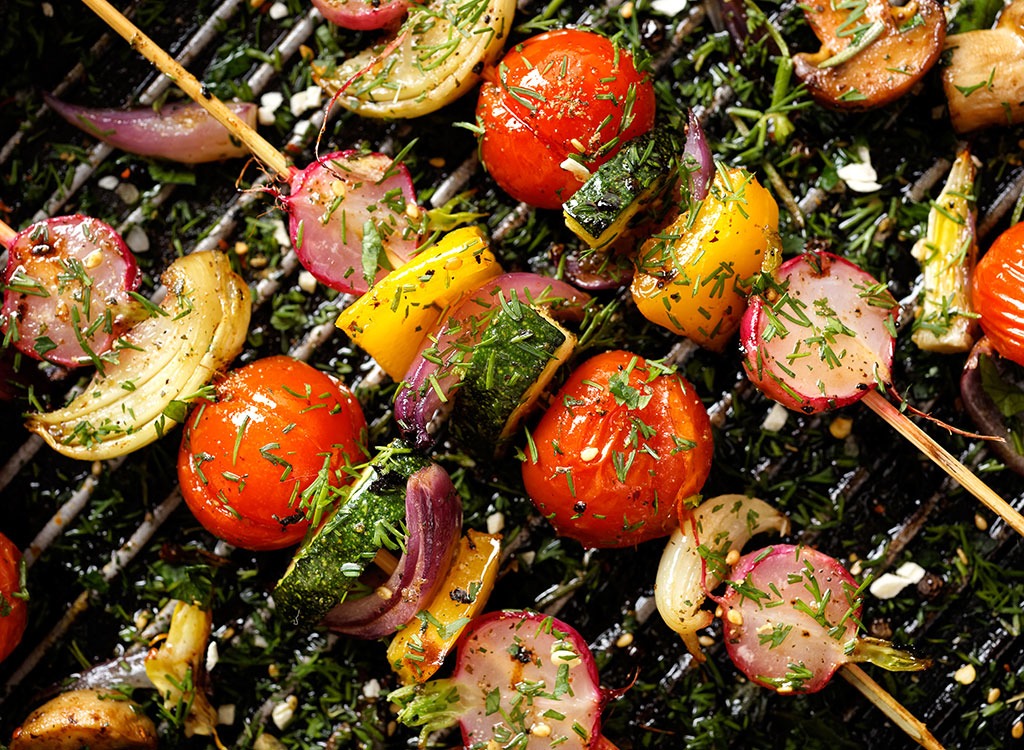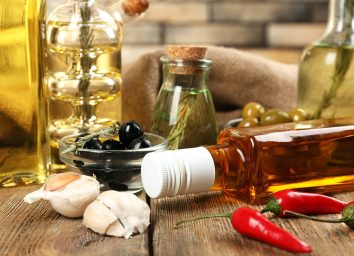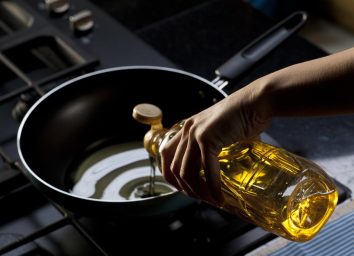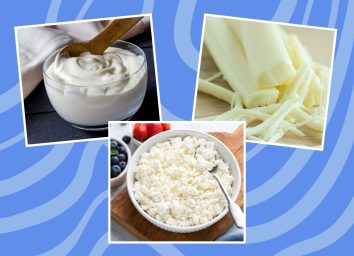Yes, You Absolutely Can Grill with EVOO—Here's Why

So you've fired up the grill, gotten your burger patties ready, and chopped up your favorite summer veggies to skewer. But what oil to you reach for to glaze your food before throwing it on the coals? Odds are probably vegetable oil — and you should stop using it.
Not only are some vegetable oils worse than sugar, but there's another heart-healthy cooking oil available that adds flavor, nutrients, and important antioxidants to your favorite dishes. And it stands up to eat pretty well, too. Yep, it's olive oil: refined extra virgin olive oil, to be exact. The staple of the Mediterranean Diet that you use for salad dressings and stovetop cooking is also great for the grill. Bonus: Olive oil is also one of the 20 Healthy Fats That Help You Get Slim.
EVOO's Smoke Point
Olive oil was often ignored in favor of vegetable oil or even coconut oil for grilling, mostly due to the perceived smoke point. The smoke point is the highest temperature an oil can be cooked at before it starts producing a visible smoke. Once an oil is heated beyond its smoke point, it can break down and produce potentially harmful byproducts. Plus, it will affect the taste of your food.
Vegetable oil has a relatively high smoke point at 400-450 degrees Fahrenheit. Canola oil's is 400 degrees Fahrenheit, while coconut oil's is around 350 degrees F. Other oils with high smoke points at 450 degrees include soybean oil, peanut oil, and corn oil.
Generally, extra virgin olive oil does have a lower smoke point at around 320 degrees Fahrenheit. But the more refined the olive oil is, the higher the smoke point is. That means high-quality extra virgin olive oils are the best to use when cooking at high temps. Cobram Estate Extra Virgin Olive Oil, for example, has a laboratory-tested smoke point of 200-215 degrees Celsius (about 392-419 degrees Fahrenheit).
Why You Can Grill With It
So EVOO is good for standard cooking, but what about grilling, which can reach higher temps? When you first flame up your coals, the grill is at its hottest at about 450 to 650 degrees. At this high of a temperature, you wouldn't be doing any cooking anyway — your food would burn before it actually cooked.
After letting the grill cool for a bit, there's a way to test the temperature without a thermometer, according to Serious Eats: hold your hand about four to five inches above the grate and count the seconds until you feel like your skin will melt off your hand if you kept it there. It's still at a high heat if you can only last 2-3 seconds (450-650 degrees). At 4-5 seconds, it's at medium-high, which is about 375-450 degrees Fahrenheit. This is the ideal temperature for searing. By 6-7 seconds, your grill is at a medium temperature (325-375 degrees), which is perfect for slowly cooking your chicken and other poultry at longer cooking times.
"Extra Virgin Olive Oil (EVOO) is perfectly safe to grill with. Its light quality and health-rich makeup make it a great substitute for butter or other oils," Larissa Iracheta, Director of Quality at olive oil processing company Deoleo) tells Eat This, Not That!.
Not only can your refined EVOO heat up to the high temps on the grill, it also adds heart-healthy monounsaturated fatty acids and antioxidants called polyphenols to your food. Extra virgin olive oil is a much healthier option for grilling than some vegetable oils, like corn, canola, and safflower oil, which can trigger inflammation and weight gain. So brush your favorite summer veggies with refined EVOO, throw them on the grill, and enjoy. And don't forget to grill up some of the The 20 Best Summer Superfoods, too.








